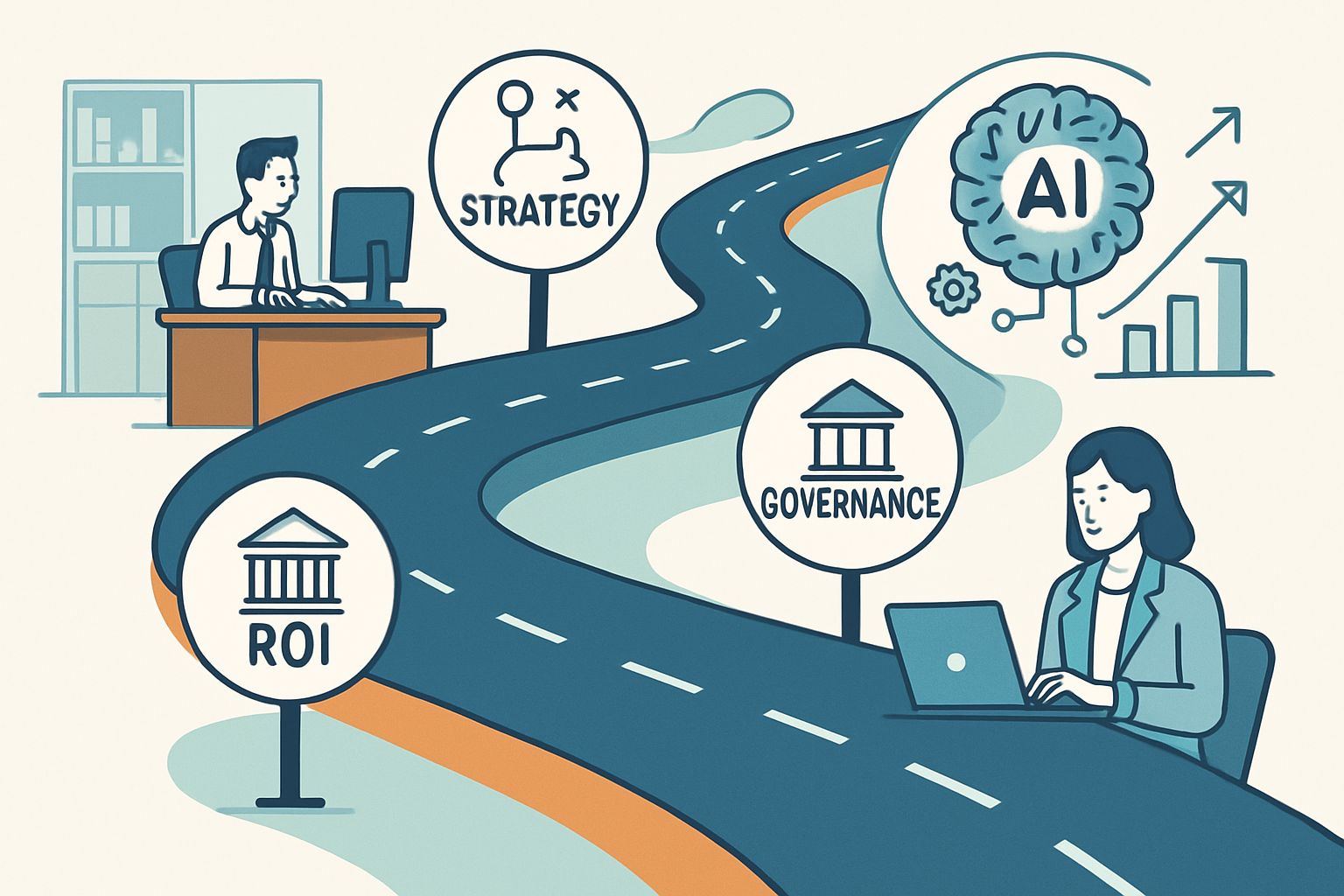
AI CERTS
18 hours ago
Bridging the AI Readiness Gap in Enterprise Adoption
Surge Masks Strategy Void
Adoption metrics look impressive. Nevertheless, only 18% of APAC respondents see themselves as “AI Leaders.” In contrast, 43% still plan to boost spending by more than 20% next year. Many executives act from FOMO rather than a roadmap. McKinsey estimates $4.4 trillion in potential productivity, yet warns leadership gaps block realization. The phrase AI Readiness Gap captures this mismatch. Poorly scoped pilots often stall, creating technical debt and eroding trust. These challenges show why deliberate planning matters. Accordingly, the next section examines data issues that stall progress.

Data Foundations Still Lacking
Generative models crave clean, connected data. However, many enterprises lack basic lineage and quality controls. IDC notes data deficits as a top barrier to implementation maturity. Moreover, governance teams often arrive late, forcing retrofits. The AI Readiness Gap widens when infrastructure cannot scale pilots into production. Firms that succeed invest early in cloud elasticity, vector databases, and monitoring. These investments cut rework and support reliable rollouts. Data readiness therefore underpins every subsequent milestone. Yet technical plumbing solves only part of the puzzle, as the workforce must also adapt.
Workforce Training Lagging Behind
Deloitte’s survey finds half of enterprises “moving fast.” Nevertheless, many neglect reskilling budgets. BetterUp research shows rework costs employees $186 monthly. Furthermore, change-management fatigue drives resistance when tools malfunction. Bridging the AI Readiness Gap requires practical upskilling paired with clear incentives. Professionals can enhance their expertise with the AI+ Executive™ certification. Certified leaders learn AI roadmapping methods, risk controls, and human-centered design. Trained managers, in turn, mentor teams through prompt engineering and oversight. Consequently, skills investments accelerate safe scaling. Yet people and data still need strong policy guardrails.
Governance Risks Escalate Quickly
Without policy, generative outputs may leak secrets, fabricate facts, or breach licenses. California Management Review calls the hype “AI washing.” Moreover, CNBC highlights rising “AI debt” from sloppy deployments. Effective governance frameworks shrink the AI Readiness Gap and raise implementation maturity. Recommended controls include tiered access, model audits, and sandbox environments. Subsequently, cross-functional councils should review impact metrics and ethics triggers. The following list summarizes urgent risk domains:
- Legal compliance: privacy, copyright, export restrictions
- Security: prompt injection, data poisoning, model exfiltration
- Quality: hallucination rates, bias scores, incident response
- Operational: uptime SLAs, shadow-IT detection, cost tracking
These guardrails reduce surprises and enable confident expansion. However, leaders still need a structured playbook to sustain momentum.
Closing AI Readiness Gap
Analysts agree on a disciplined sequence. First, define high-value use cases tied to measurable KPIs. Secondly, apply AI roadmapping to align tech, data, and talent. Thirdly, pilot in controlled sandboxes with explicit stop/go rules. Fourth, scale only after demonstrating ROI and compliance. McKinsey stresses that leadership commitment narrows the AI Readiness Gap. Moreover, Deloitte finds that governance maturity triples the odds of enterprise success. Continuous feedback loops then refine models and retrain staff. Consequently, organizations evolve from experimental pockets to systematic capability. The process also builds credibility with regulators and investors. Still, execution requires clear milestones.
Roadmap For Implementation Maturity
A staged roadmap helps teams track progress. Industry playbooks outline four tiers:
- Exploration: small proofs of concept, risk assessments
- Stabilization: data cleanup, baseline governance, skills bootcamps
- Expansion: multi-function rollouts, metric dashboards, cost controls
- Optimization: agentic automation, continuous learning, portfolio review
Each tier tightens controls while unlocking benefits. Moreover, checkpoints keep hype in check. Firms that follow this structure improve implementation maturity and close the AI Readiness Gap. They also outperform peers on efficiency metrics. Furthermore, systematic audits prevent “workslop” from flooding inboxes. Therefore, proactive roadmaps safeguard brand trust and employee morale.
These stages highlight a path from pilots to profits. Nevertheless, sustained leadership attention remains essential for lasting results. The conclusion distills these lessons and offers next steps.
Conclusion
Survey data confirms rapid adoption with limited discipline. Consequently, many firms face rising costs, compliance threats, and frustrated employees. However, leaders can bridge the AI Readiness Gap by investing in data foundations, workforce skills, and governance. Moreover, structured AI roadmapping accelerates implementation maturity. Forward-thinking executives should start small, measure relentlessly, and scale after evidence emerges. Finally, professionals aiming to lead this evolution can validate their expertise through the AI+ Executive™ certification. Start building a resilient AI future today.



